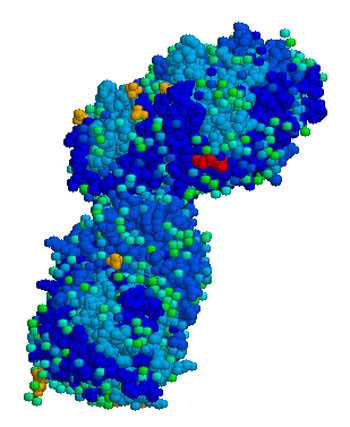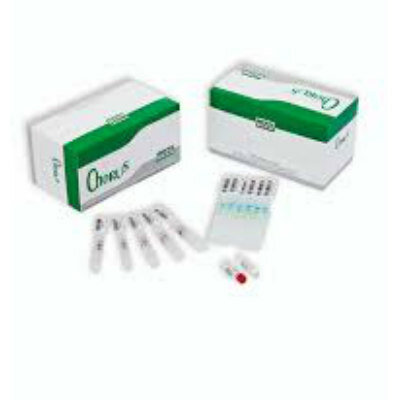Lipid-Induced Immune Activation Responsible for Increased Myeloma Risk in Gaucher's Disease
By LabMedica International staff writers
Posted on 23 Feb 2016
Analysis of tissue and blood samples from mice and human patients with Gaucher's disease showed that an increased risk for development of myeloma was linked to long-term immune activation by lysophospholipids.Posted on 23 Feb 2016
Lysophospholipids are small bioactive lipid molecules characterized by a single carbon chain and a polar head group. Two subgroups can be distinguished: molecules containing the sphingoid base backbone (lysosphingolipids) and molecules containing the glycerol backbone (lysoglycerophospholipids). The lysolipid structure renders these lipids more hydrophilic and versatile than their corresponding phospholipids.

Image: Hereditary deficiency of the enzyme glucocerebrosidase (also known as glucosylceramidase or acid beta-glucosidase) is the cause of Gaucher\'s disease (Photo courtesy of Wikimedia Commons).
Investigators at Yale University (New Haven, CT, USA) had shown previously that patients with Gaucher's disease, an inherited lipid storage disorder, had a significantly increased risk for developing myeloma.
In the February 11, 2016, issue of the New England Journal of Medicine, these investigators reported that gammopathy (a precursor to myeloma) in both mice and patients with Gaucher's disease was initiated by specific lipids, such as lyso-glucosylceramide (LGL1), and that the antibodies made by tumor cells in nearly a third of myeloma patients were directed against such lipids.
“Understanding the origin of any cancer has several implications for how to best prevent it,” said senior author Dr. Madhav Dhodapkar, professor of medicine and immunobiology at Yale University. “These studies set the stage for newer approaches to lower the levels of these lipids in patients with Gaucher's disease and others with precursors for myeloma. Potentially, this could be achieved with drugs or lifestyle changes to reduce the levels of lipids to lower the risk of cancer.”
Related Links:
Yale University













